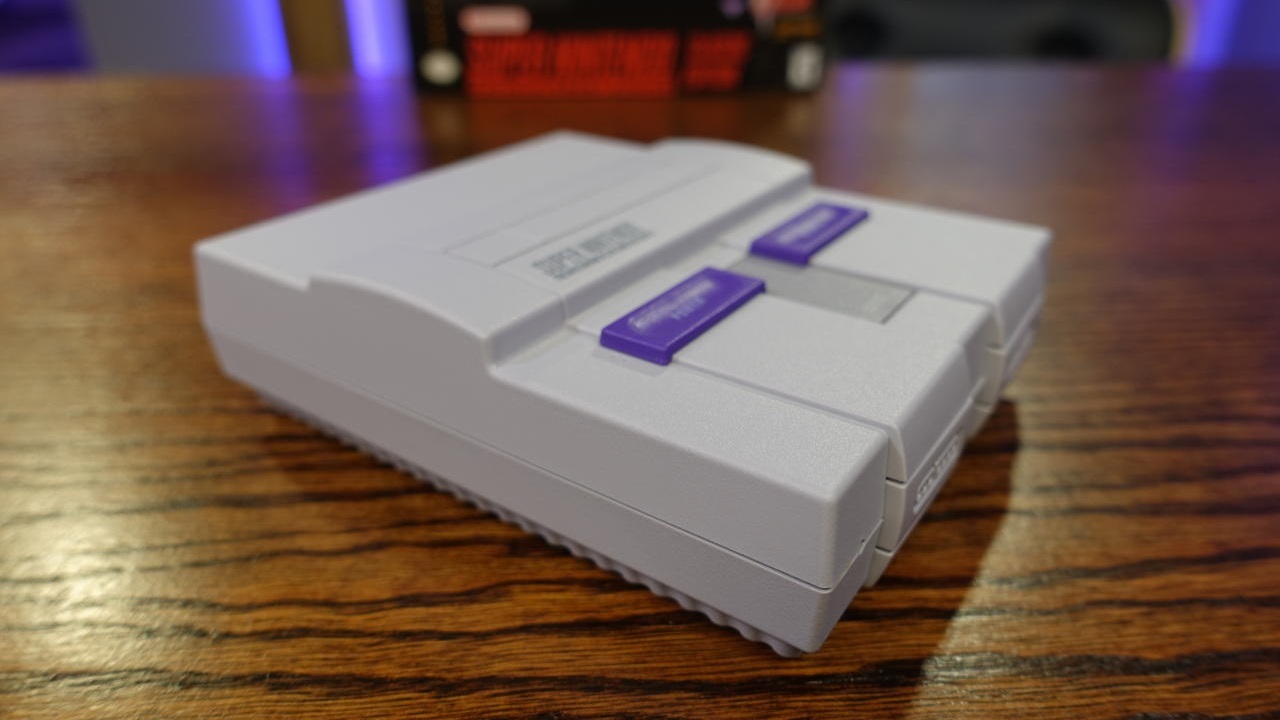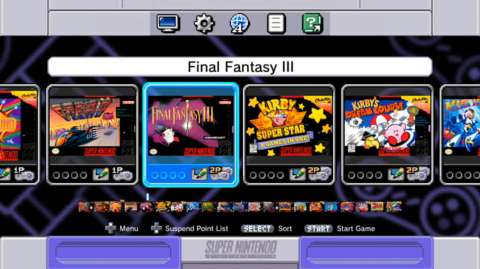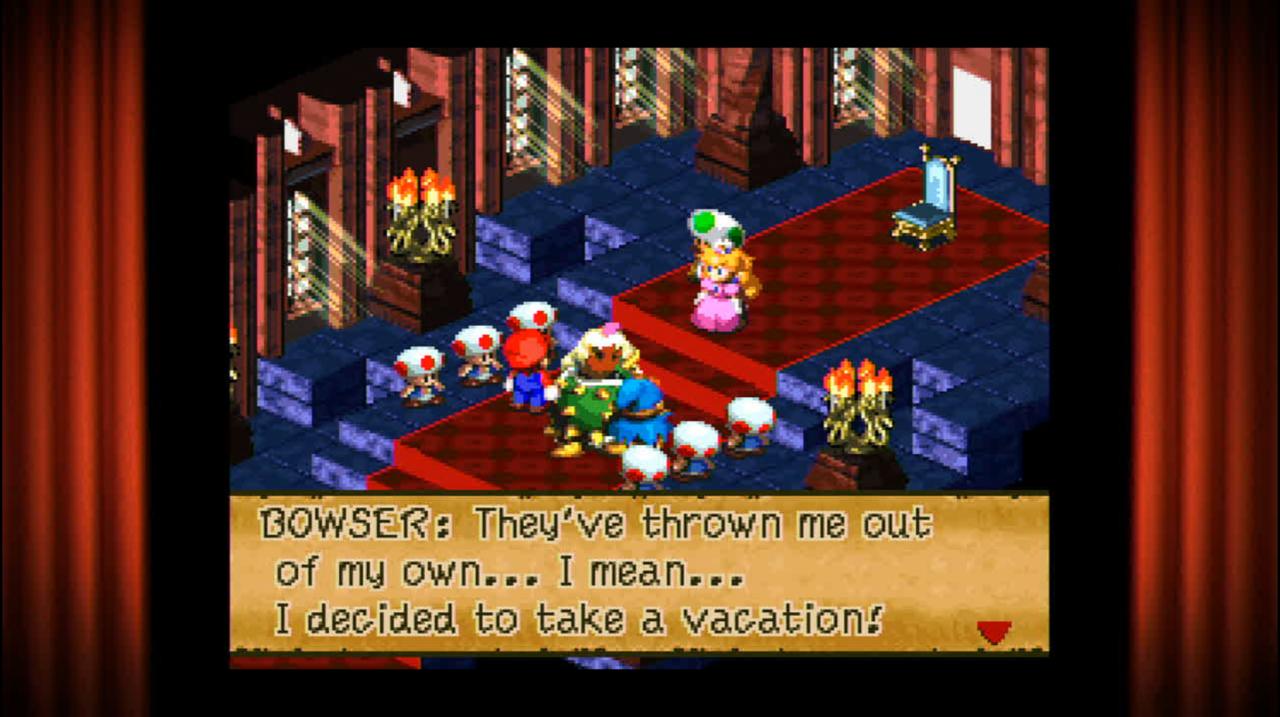With its release in November 1991, the Super Nintendo Entertainment System (SNES) brought the magic of the Super Famicom to North America. For many of us, it was our first console, and it shaped the way we think and feel about video games today. From its deep role-playing games to lengthy action-adventures, the SNES is a platform worth revisiting in 2017. What sets the SNES Classic apart from the NES Classic is inherent in what the platform offered in its era. Jumping from 8-bit to 16-bit opened the door for games to be much more expansive and nuanced. This is what propels the SNES Classic from simply being a novelty.
Jumping from 8-bit to 16-bit opened the door for games to be much more expansive and nuanced.
In this package, you get the console itself, two controllers, a five-foot HDMI cable, a five-foot USB-mini cable to power the system, a USB power brick, and an old-school folded poster. The system contains 21 notable games pre-loaded onto the system, all for $80 USD.
Getting Technical
The SNES Classic looks identical to the original with all the gray and purple accents, but much smaller and lighter. The power button functions just the same and the reset switch brings you back to the main menu, which is the only way to get back to the home screen. It’s a minor annoyance if your setup isn’t within immediate reach. Eject and the cartridge slot are non-functional and just for show since there aren’t any cartridges to insert.
The front panel--that looks like the original controller ports--pops outward and stays attached to reveal the real ports, the same ones seen on the NES Classic and Wiimote. The controllers themselves are identical to the original SNES model in size and shape; and the buttons have the same solid, tactile feel. A downside is that d-pad feels a bit stiff compared to modern gamepads. One thing you don’t have to worry about this time around is cord length. At about five-feet, it’s twice as long as NES Classic controllers.

At the back of the console you’ll find the mini-USB port for power; this little thing doesn’t need much juice with its 5 volt spec, and can even be powered through a USB port built into TVs or a computer, saving you an outlet. HDMI is the single video output. This allows the SNES Classic to upscale games from their 240p resolution to 720p, a multiple of original resolution (by a factor of three); native 1080p would’ve resulted in slight pixel distortion.
Push the power switch up and the system boots straight into the snappy main menu. Options are on the top bar, where you customize the visuals: fake scanlines from the CRT days, traditional 4:3 aspect ratio, or perfectly square pixels. You can also choose the type of border to fill up your widescreen display.

You have the option to keep the background active if the console is left idling; Mario will walk by and hit a game block from the main menu to roll gameplay footage. Turning on "My Game Play Demo" uses your own gameplay saved by the system and "Classic Demo" uses built in footage. It’s cute, just like the lovely menu music. In addition, the suspended point system returns from the NES Classic; you can stop and resume a game at any point. The tricky part is, games with internal saves can have that data overwritten if you enter an earlier suspend point.
It's All About Games
The reason why you’d want an SNES Classic is to revisit the greatest hits from Nintendo's 16-bit library, or experience what you might’ve missed, all in one package. Not to disparage the 8-bit era, but what separates the SNES from the NES is that the extra power afforded developers the opportunity to create greater games. We saw more expressive visuals for stronger characterizations in game worlds, deeper stories, longer adventures, and more nuanced mechanics. And some of the best soundtracks in all of gaming.
I genuinely enjoyed pouring hours into Super Mario RPG again. From its unforgettable songs to unprecedented story beats in the Mario universe, it’s truly unique even in a modern sense. In what other game will you have Bowser, Peach, and Mario fighting alongside each other? It was an achievement in world-building and it ushered in a new wave of RPG fans.
Final Fantasy III (Final Fantasy VI in Japan) opened a massive world to us with 40+ hours worth of role-playing, giving you every reason to gather party members, learn their roles and abilities, and take down Kefka and his evil empire. Movement is a bit slow and the random encounters are dated, but unraveling Terra’s story and all its branches still has a place in 2017.

Another tremendous RPG in Secret of Mana deserves a full play-through. Super Metroid is a sterling example of the “Metroidvania” genre we still see today. We even get the real release of Star Fox 2, and while it’s a game that hasn’t aged well, it’s neat that the SNES Classic offers something exclusive. You also can’t overlook Super Mario World, Legend of Zelda: A Link to the Past, and Earthbound. Many of these games are the realization of ideas set in motion from the NES era, and continue to influence modern gaming.
Many of these games are the realization of ideas set in motion from the NES era, and continue to influence modern gaming.
Speaking of hardware, the emulation delivers an authentic SNES experience that looks great on HDTVs. I spent time with all 21 titles to get a feel for how they ran. By and large, games look true to form and run exactly as you’d expect, for better and worse. A few games suffered from framerate drops. Street Fighter II Turbo had some slowdown with characters pulling off flashy attacks as did Mega Man X in the more hectic moments. The system is more or less mimicking real hardware, adhering to the original performance of these games. It’s not game-breaking, but it was noticeable and undermined a few moments.
The SNES Classic is a closed system; what you see is what you get, barring a hypothetical firmware update or expansion. And would it have been nice to see Final Fantasy II (or Final Fantasy IV in Japan) or Chrono Trigger? Sure, but that doesn’t negate the fact that we still have an all-star roster of games to play.
We’re aware that there are so many ways to play these games and we’ve had several versions of them through the years. But to have this lineup of iconic games in one place, in an easy, accessible, and convenient fashion makes the SNES Classic worth seeking out. If Nintendo’s looking to capitalize on 16-bit nostalgia, I’d say it did a damn fine job.




















